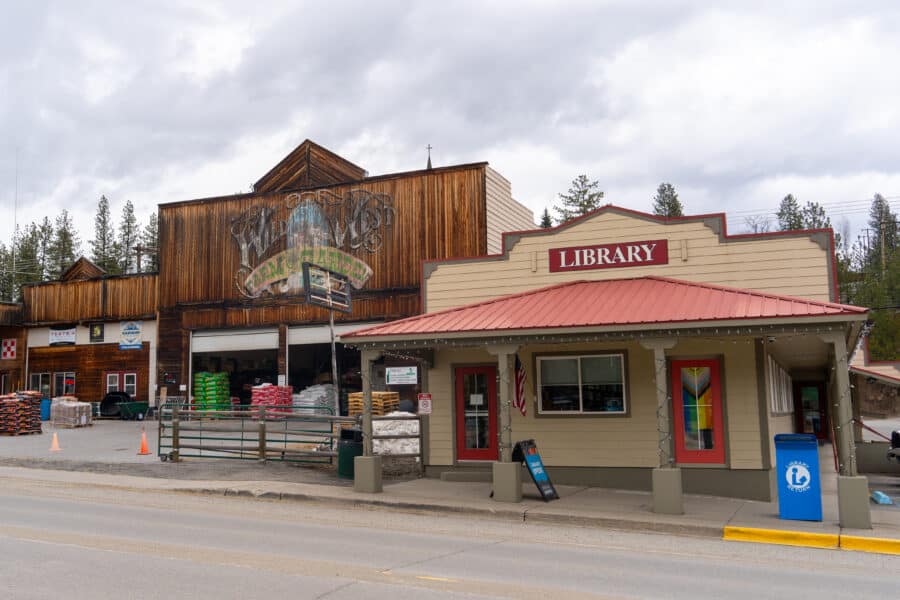Already, KCEC has made significant headway.
“A day like today—where it’s clear, no clouds—every member of Kit Carson, every business is getting solar energy,” says Reyes. Back in 2010, KCEC members voted to move the co-op toward a goal of 100% renewable energy, and as of this year, Reyes says the co-op is able to meet 100% of its daytime energy demand through solar power on sunny days. But Reyes says that was only phase one.
Soon, he said, KCEC will start building additional solar and storage facilities that will be able to power thousands of homes.
“We’re also working right now on a green hydrogen project in which we will build a hydrogen facility,” he says.
So far, KCEC members have seen the results. Over the past six years, Reyes says rates have dropped by 33%, savings which have been passed down to co-op members. It equates to about $15 savings per month. Altogether, he hopes the cooperative will consist of 80% renewable sources by 2030.
The main obstacle to the ambitious goal?
Funding.
“It’s feasible,” Reyes says. “It’s just right now a little bit expensive.”
That’s where the U.S. Department of Agriculture (USDA) comes in.
The Inflation Reduction Act, a landmark law passed in 2022, earmarks up to $10.7 billion to rural co-ops and other electric service providers to apply for grants and loans as long as they are affordable and focused on clean energy. According to the federal government, the package is the largest single investment in rural electrification since 1936, when President Franklin D. Roosevelt signed the Rural Electrification Act into law as part of the New Deal.
“It’s a huge amount of money,” says Bryce Yonker, executive director and CEO of Grid Forward, a nonprofit industry trade organization working to advance energy modernization and innovation in the western United States. “It’s a transformational amount of investment incentives [for] smaller grid operators,” which exist in rural communities across the country, Yonker says.
Agriculture Secretary Tom Vilsack said in a statement that cleaner energy will provide rural communities with an affordable and reliable power grid. It will also support new jobs and help lower energy costs in the future. Nearly a year in, the act has created more than 170,000 jobs with investments in clean energy and climate, with a projected 1.5 million additional jobs over the next decade.
“These investments will also combat climate change and significantly reduce air and water pollution that put children’s health at risk,” Vilsack said. “The U.S. Department of Agriculture stands ready to partner with municipalities, tribal entities, entrepreneurs, rural electric cooperatives and other utilities to see this transformative investment come to life and create new economic growth and healthier communities.”
Funding through the Inflation Reduction Act is distributed by the USDA through two programs: the Empowering Rural America, or New ERA, program and the Powering Affordable Clean Energy (PACE) program.
The Empowering Rural America program makes $9.7 billion available in grants and loans only to eligible rural electric cooperatives to build, purchase or deploy renewable energy systems, zero-emission and carbon capture systems. The PACE program, meanwhile, makes $1 billion available in partially forgivable loans to renewable-energy developers and electric service providers.
The nominal focus of the New ERA program, says Yonker, is to help small and rural communities integrate decarbonized supply, which is reducing or completely eliminating carbon emissions. “So if they want to bring solar, wind, geothermal, energy storage, and other solutions that are going to help them bring clean energy onto their power systems, that’s what it’s really focusing on doing,” Yonker says.
One of the advantages of rural electric co-ops is that they allow direct control by the local community, which is typically a great thing, says Yonker.
“The downside is that you’ve got a really limited professional staff,” Yonker adds, where personnel often take up multiple roles.
As a result, this limits their ability to navigate complex federal applications and compliance requirements, something that many co-ops are not staffed to do, Yonker says. “It will be a challenge for a number of cooperatives to find the people power necessary to navigate these processes.”
Yonker hopes that coalitions or organizations can band together to navigate the steps necessary to apply.
“The first step for interest in this program (called Empowering Rural America) is fast approaching with letters of interest going into the agency by mid September,” he said. “USDA has been an energy partner with rural America for a very long time and this may be its most exciting chapter yet.”
John Baron, Energy, Utilities and Resources expert at Baringa, a consulting firm, says that because wind and solar developments in rural areas of the country face increased pushback from residents, federal funding for co-ops offers a new way to think about these projects.
“Rural co-ops and their members now, more than ever, have the opportunity to directly benefit from renewable energy development,” Baron says in an email. “Members will be able to think about clean energy as owners of these projects rather than just hosting them in their communities. And in doing so, they can realize lower electric bills.”
While much of the funds available in the IRA will go to the development of solar and wind, Baron said, the new ERA program also targets projects that will enhance electric system reliability and resilience while decreasing emissions.
“This means rural co-ops can and will be taking a look at things like carbon capture and storage, transmission upgrades, energy storage and hydrogen,” he added.
“Rural electric cooperatives have been reducing their dependence on carbon-intensive power, but the costs have been a barrier to consumer-owned rural electric cooperatives,” a spokesperson for the USDA said in an email. “The level of interest in the new Inflation Reduction Act programs has been very encouraging and USDA looks forward to reviewing new proposals to move to a clean energy future.”
Reyes said moves in the House by the G.O.P. to reallocate IRA funding away from fighting climate change does affect the co-op’s ability to build out renewable energy sources.
“We currently have several projects for additional solar and storage facilities as well as a long duration storage project that will get to our goals of carbon free energy day and night,” he said.
Reyes says the rural cooperative plans to apply for a host of funding opportunities.
“To be honest, sometimes it’s like, there’s too many funding resources for a small [co-op] to figure out,” Reyes says. The company sometimes relies on consultants to help with the workload. “We are applying to any of those where we think we have the best opportunity to fund our projects.”
In previous years, under a partnership with Tri-State Generation and Transmission, a wholesale power supplier that relies heavily on fossil fuels, KCEC has received some negative reviews online. (Reyes says the co-op handles complaints by calling or emailing members back and addressing their concerns.) The co-op has since ended its partnership with Tri-State, making its final exit payment last year. The move to claim energy independence is expected to save KCEC an estimated $150-170 million over the next 15 years under its new contract with Guzman Energy.
“Under Tri-State we could only have 5% solar,” Reyes says. “We now have 100% daytime. We have more control over our destiny.”
For Reyes and his team, renewable energy has not only cut costs for members; it has also melded with a way of life that includes Indigenous people who emphasize the importance of the earth.
“Renewable energy complements our quality of life,” he says. “It isn’t that we’re just selling renewable energy, we’re really complementing that when you come to northern New Mexico, [whether] it’s to ski and to fish and to hike, you want clean air and clean water. So the power you get when you’re up here, visiting or if you live here, it complements it. So that also generates electricity that acknowledges and respects our environment.”
Kristi Eaton is a freelance journalist in Oklahoma, formerly with the AP in Oklahoma and South Dakota. She covers social justice issues, gender, travel and more, with a focus on solutions-based stories. Her work has appeared in The New York Times, The Associated Press, The Washington Post and elsewhere. Visit her website at KristiEaton.com or follow her on Instagram @KE_Comms.
Have thoughts or reactions to this or any other piece that you’d like to share? Send us a note with the Letter to the Editor form.
Want to republish this story? Check out our guide.









